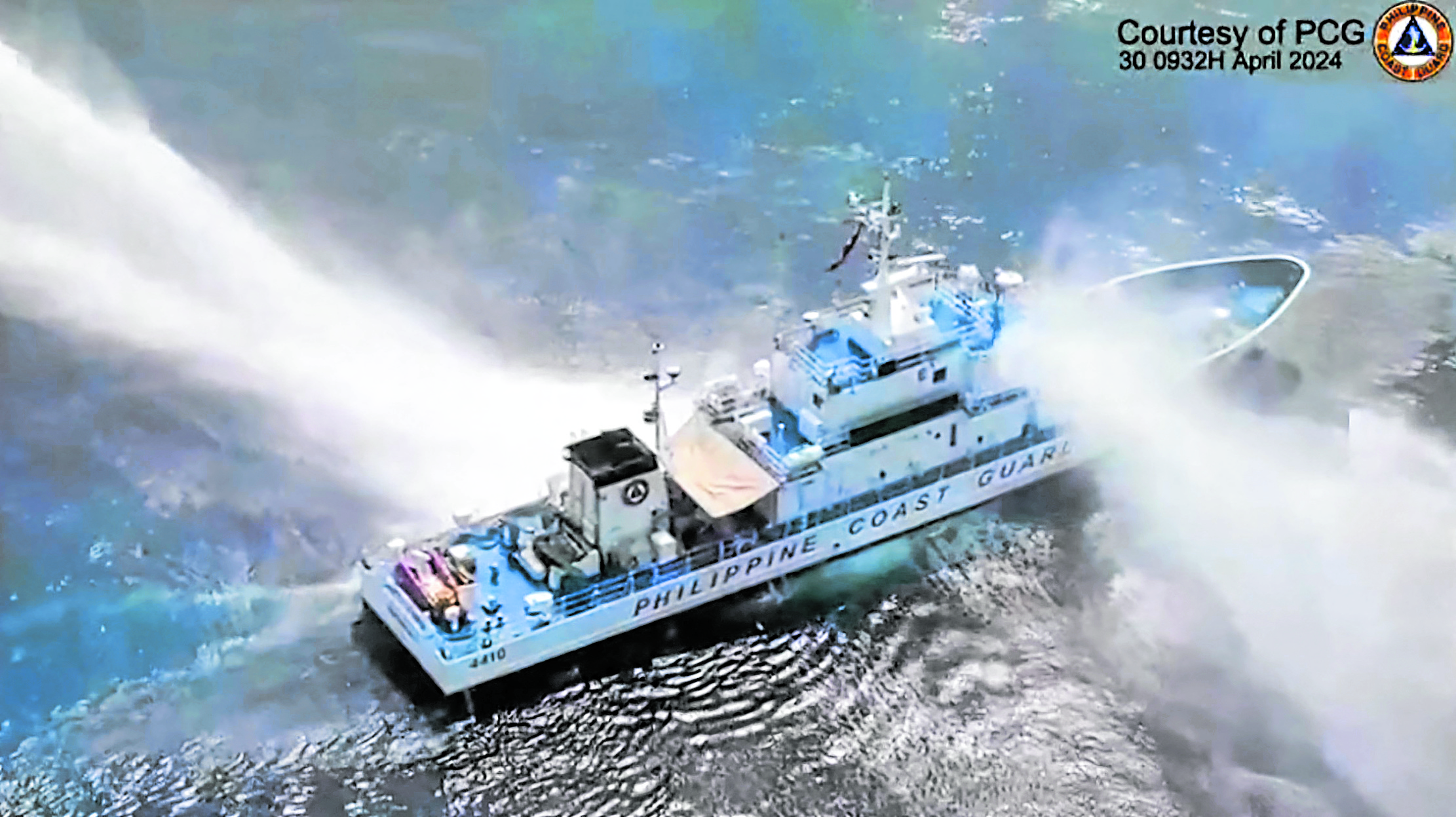
‘NOT ONLY SHOCKING BUT APPALLING’ A frame grab from video footage released by the Philippine Coast Guard shows its ship, the BRP Bagacay, being hit by water cannon from Chinese coast guard vessels near the Chinese-controlled Scarborough Shoal in the West Philippine Sea. Also, hit on its way to the shoal was the BRP Bankaw of the Bureau of Fisheries and Aquatic Resources. —AFP
MANILA, Philippines — China Coast Guard (CCG) used “very fatal” water cannon pressure in the latest Scarborough (Panatag) Shoal incident, according to Commodore Jay Tarriela, Philippine Coast Guard spokesperson for the West Philippine Sea.
According to Tarriela, the water cannon attack on April 30 also marked China’s increased aggression against Filipino vessels in the West Philippine Sea (WPS).
“Well, if we are going to look at how it bent the railing of the Philippine Coast Guard vessels because of the water cannon, obviously that would be very fatal,” Tarriela said in a press conference.
READ: China water cannons 2 PH vessels in Scarborough Shoal anew
He earlier mentioned over a radio dwPM that the water cannon assault in the latest humanitarian mission was “more fatal” compared to previous incidents.
Tarriela was referring to the recent incident in Bajo de Masinloc, where CCG vessels blasted the PCG’s BRP Bagacay and Bureau of Fisheries and Aquatic Resources’ BRP Datu Bankaw with water cannons.
BRP Bagacay sustained damage on its railing and canopy, while the starboard astern of the BRP Datu Bankaw was likewise destroyed, said Tarriela.
Tarriela also noted that the water cannon pressure is estimated to breach the fatal 200 pounds per square inch (PSI) of pressure.
The ships’ communication and navigation systems were also hit in the attack.
“‘Yung nakaraang resupply mission natin sa Ayungin, ang tinatarget lang nila ng ganitong katinding high pressured water cannon ay mga resupply boats,” noted Tarriela.
(In our previous resupply mission to Ayungin, what they targeted with such intense high-pressure water cannons were just resupply boats.)
“This is actually the first time na direct attack with so much forceful pressure ng water cannon against a PH vessel,” he added.
(This is the first time a Philippine vessel has been directly attacked with so much forceful pressure from a water cannon.)
The two Filipino ships were attacked during a “humanitarian mission” to provide fuel subsidies, water, and food packs to Filipino fishermen in Scarborough Shoal.
Foreign envoys and Filipino lawmakers blasted China over the incident, with United States Ambassador to the Philippines MaryKay Carlson reaffirming the US’ support to “uphold freedom of navigation and international law.”
READ: Foreign envoys, Filipino lawmakers blast China’s latest water cannon attack
Australian Ambassador Hae Kyong Yu also labeled China’s action as an “obstruction.”
The Philippines and China have been embroiled in a long-running maritime dispute due to the latter’s so-called nine-dash line, a claim that it owns the entirety of the South China Sea, including portions of the West Philippine Sea.
China seized control of Scarborough Shoal’s lagoon in 2012 after a CCG standoff with Philippine vessels. Since then, at least two CCG ships have been permanently deployed inside the lagoon.
The Philippines then challenged and won against China’s assertions before the Permanent Court of Arbitration in The Hague, Netherlands, in 2013.
This landmark decision also included Scarborough Shoal, which was declared a traditional fishing ground that the Philippines, China, and Vietnam should share.
But China consistently refused to recognize the ruling, ignoring the Philippine government’s protests and demands for Chinese vessels to leave the WPS.